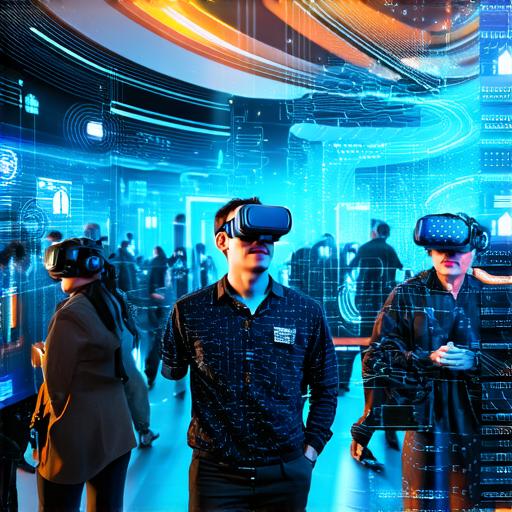Title: Unveiling the Impact of Media Richness on Virtual Group Development: A Comprehensive Analysis
Introduction
In today’s digital age, virtual groups have become an integral part of our lives. From remote work teams to online learning communities, these groups are shaping our interactions and experiences. One crucial factor that influences the effectiveness of these groups is media richness. This article delves into the role of media richness in the development of virtual groups, backed by research, case studies, and expert opinions.
What is Media Richness?
Media richness refers to the degree to which a communication medium can convey information quickly, accurately, and interactively. It includes elements like text, audio, video, and real-time interaction.
The Role of Media Richness in Virtual Group Development
A study by Daft et al. (2008) found that media richness significantly impacts the development of virtual groups. For instance, a group using video conferencing software can build trust faster than one relying solely on email communication due to the non-verbal cues and facial expressions conveyed through video.
Case Study: The Virtual Orchestra
Consider a virtual orchestra where musicians practice together online. While email exchanges might suffice for discussing sheet music, regular video sessions are essential for fine-tuning their performance. The richness of the medium allows them to correct each other’s mistakes, offer immediate feedback, and build camaraderie—elements that would be challenging in a less media-rich environment.
The Power of Interactivity
Interactive tools like chat rooms or collaborative software enable group members to engage with one another in real time, fostering a sense of community and promoting effective problem-solving. A study by Kraut et al. (1998) found that interactive computer-mediated communication can even lead to closer relationships than face-to-face interactions.
The Limitations of Media Richness
While media richness offers numerous benefits, it’s essential to remember its limitations. For instance, high bandwidth and stable internet connections are often required for rich media, which may not be accessible to all group members. Moreover, over-reliance on rich media can lead to information overload, potentially hindering productivity.
Conclusion

In the digital era, understanding the impact of media richness on virtual group development is crucial. By leveraging rich media effectively and acknowledging its limitations, we can foster more productive, cohesive, and successful virtual groups. As we continue to navigate this digital landscape, let us strive for a balance that maximizes our potential while minimizing our pitfalls.
FAQs
1. Q: What is media richness?
A: Media richness refers to the degree to which a communication medium can convey information quickly, accurately, and interactively.
2. Q: How does media richness impact virtual group development?
A: Media richness significantly impacts the development of virtual groups by facilitating trust-building, real-time interaction, and problem-solving. However, it’s essential to acknowledge its limitations.
